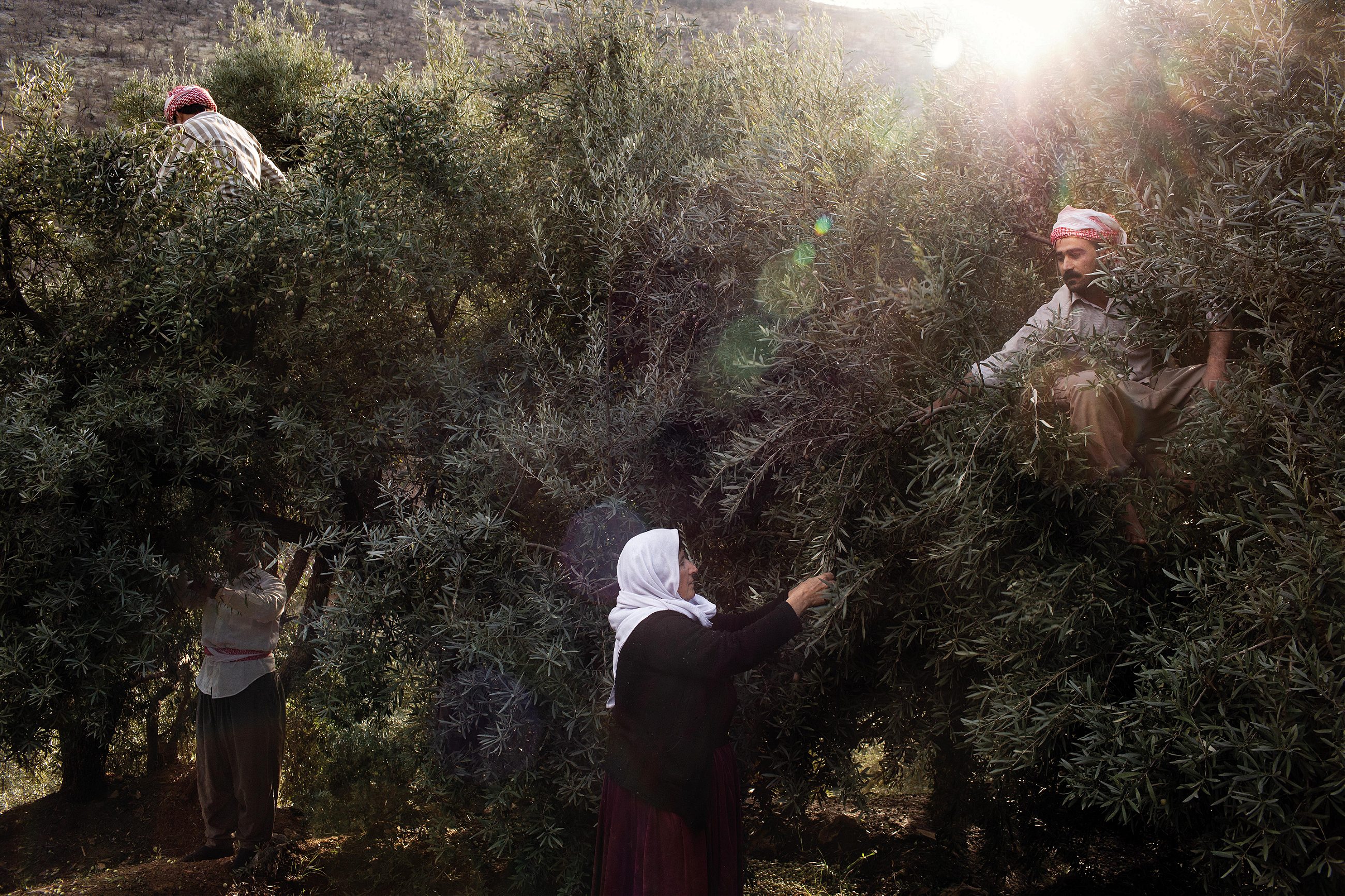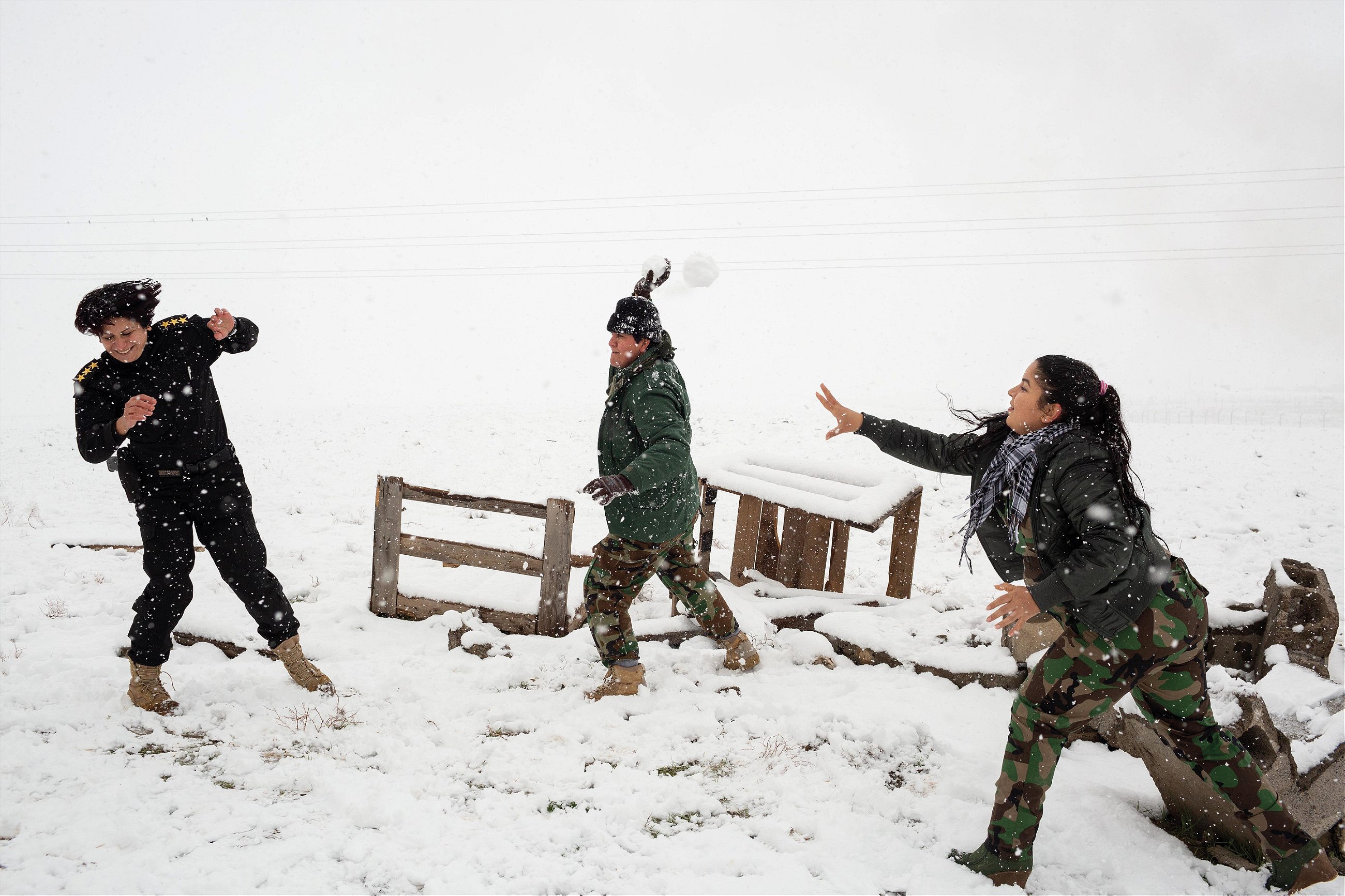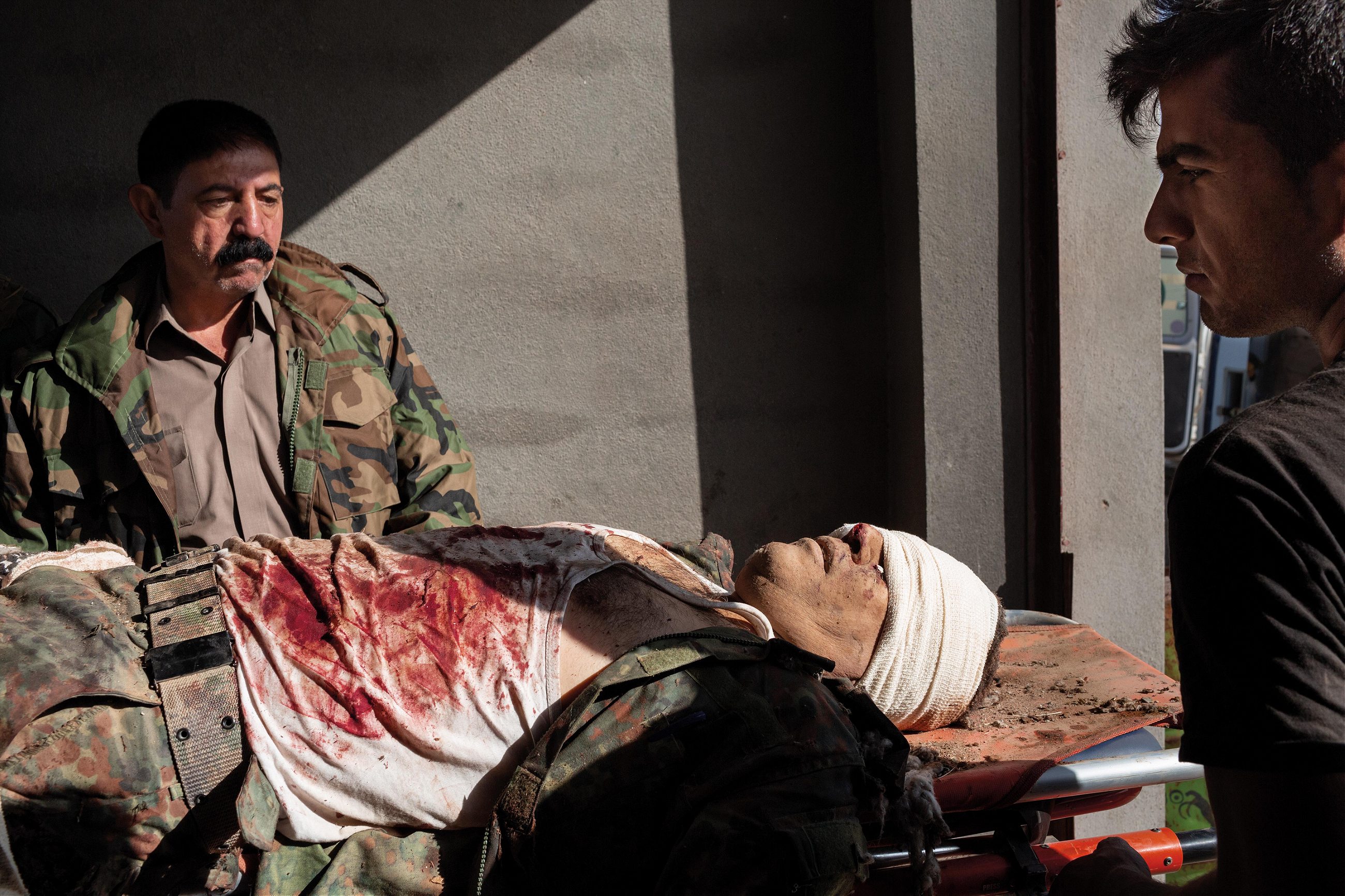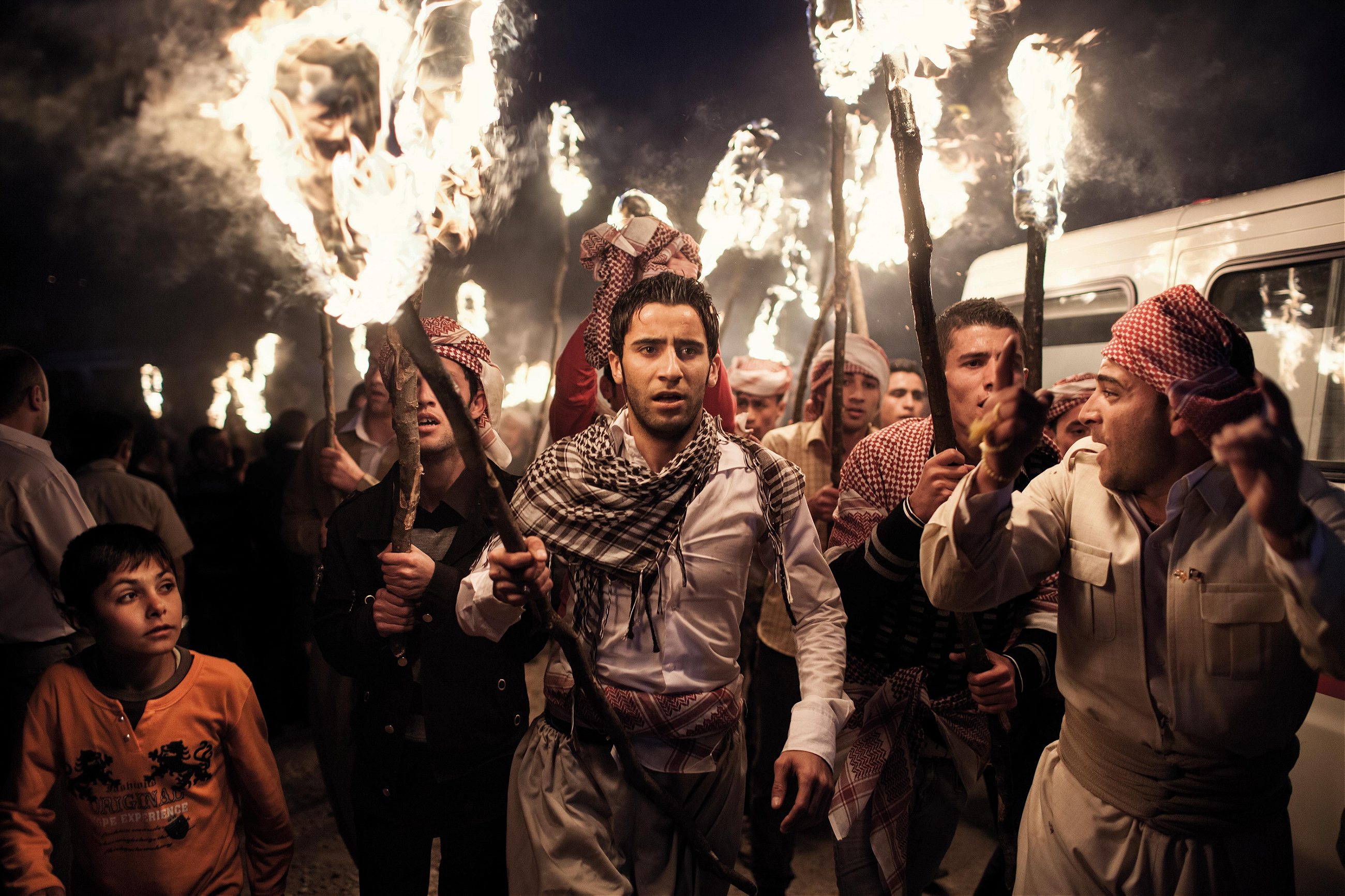R&K’s Cengiz Yar speaks to photographer Sebastian Meyer about his new book “Under Every Yard of Sky,” Iraqi Kurdistan, and how to condense ten years of work.
When ISIS swept across Iraq in the summer of 2014, Kurdish photographer Kamaran Najm rushed to the frontlines with the Peshmerga—Iraqi Kurdistan’s military forces—to cover the fighting. In the hours that followed, Najm was struck in the neck by an ISIS round and was lost in the chaos as the Peshmerga forces he was covering retreated. His family and friends have hunted desperately for him since then, but have been unable to find him. Among those searching was one of Najm’s closest friends, American photographer Sebastian Meyer.
It is this friendship and loss that weaves like a thread through Meyer’s first book Under Every Yard of Sky (Redhook). With poetic imagery and deeply reported narrative, Meyer tells his story, that of the Iraqi Kurdish region, and the loss of Najm. “It’s a sad story,” Meyer says. “You’ll finish this book and will feel sad.” While this may be true, there is love and warmth to be found throughout the book’s pages too. Meyer’s thoughtful compositions and impassioned writing highlight his ten years of work in the region.
Roads & Kingdoms’ Cengiz Yar spoke to Meyer at his home in Brooklyn, alongside his wife and newborn son.

Roads & Kingdoms: What brought you to Kurdistan initially?
Sebastian Meyer: I was hired by a British film company to do portraits of the survivors of Anfal in 2008. On that assignment I met Kamaran. We became close friends quickly and stayed in touch. About three or four months later he said, “Hey, look, I’m thinking about starting this photo agency. What do you think?” And I was like, “It’s a great idea.”
I was 28 at the time and living in London. It was during the financial crisis and all the newspapers were losing photojournalists very quickly.
I was like ‘London’s expensive. There’s no work here. Kurdistan is in an economic upturn, and I can go and do something really cool that I can’t do here.’ So that’s how I ended up moving there, and then we built Metrography, and I just stayed and worked there.

R&K: How did your impression of Kurdistan change over time?
SM: I saw Kurdistan, when I first arrived, in a two-dimensional way. I saw the Kurds as a warrior people, who had been victims of Saddam’s brutality, and who had a vibrant and unique culture. And I say that with a wry smile on my face, because that’s probably how everybody sees and thinks of Kurdistan when they first show up. And then, as things changed, as I spent more time there, I started to see it in a more nuanced way.
The first thing that burst that bubble was when I learnt about the Kurdish civil war. Tens of thousands of people were killed in a very short amount of time. And the image of the Kurds solely as victims of someone else’s brutality disappeared instantaneously, because I started to see that that brutality also existed amongst them as well.
Not to point fingers and say that Kurdistan or the Kurds are bad people, but just that that narrative wasn’t true. I started to see this incredible level of hospitality, which was true, I started to see through it a little bit. That hospitality is a very important part of Kurdish identity. There are other parts of Iraq where the hospitality is equally intense, but it really depends on who you are. As an American, I got a lot of hospitality. I had Iranian friends come over who didn’t get the same treatment. I also started to see the horrendous treatment of women. It’s kind of like the curtain eventually gets pulled back, and you get to see the wizard.


R&K: Why is making a photography book so complicated?
SM: I think photography books are complicated for a number of reasons, one of which is that we grow up reading books with words, we don’t grow up reading photography books. So you are dealing with an audience where the experience is new to them. So there’s no standard language, which is great, it’s liberating, you can do kind of whatever you want, and the audience is going to be up for it. You can have different layouts, you can have weird layouts.
This particular book is difficult, because it’s ten years of work. And even though it’s photographs, you still have to tell a story. There still has to be a narrative arc to it, you still have to take the audience on a journey.

R&K: How did you go about cutting down 10 years of work?
SM: I picked 500 pictures and printed them out on four-by-six inch glossy. We sat down with a group of about five or six people, all photographers and editors that I respect. And we just started passing the pictures around. Everyone got to look at the same picture, and then if they liked it, they just put their initials on the back. At the end, we made stacks of the pictures which had the majority of signatures on it, and the rest that didn’t. Then there were the middle ones. The images that 50% of the people liked and then there were pictures that no-one responded to.
It’s brutal, because you have really close attachments to the photographs that you take. You were there. You smelled it. You felt it.
Although I strive for well-composed photographs with multiple visual layers, photography for me is about the people in the picture, and it’s about the story
It’s why directors shouldn’t always edit, because you’re too emotionally attached to the stuff. You need the perspective of people who you really respect to let you know what works and what doesn’t work. One of the things that I discovered in making this book, but really I discovered it as a photographer, is although I strive for well-composed photographs with multiple visual layers, photography for me is about the people in the picture, and it’s about the story.

R&K: Are there any images which speak to that and made it into the book?
SM: One of my favorite pictures is the one of Hazhar crying behind his desk, which is, arguably, a badly composed photograph. He’s all the way to the side. It’s not particularly well-balanced with the computer. The Kleenex positioning is not great. It’s a flat image as well. But I think it’s my favorite picture out of the book because it tells so much. It makes you ask questions. There’s a man in a suit behind a desk with a laptop that you probably have at home. Why on earth is he crying? And it pulls you into the picture, and it piques your curiosity, and it draws you in. You want to know about this guy. I think with a lot of photography, we’re not so curious about the people. You’re just, ‘Oh, look, dead body, or ISIS this, or fighter that.’ We don’t get pulled in. I think that’s kind of what I want to do with photography. As much as I want to create beautiful pictures that are lauded for their visual whateverness, I think telling stories is really what I’m after.

R&K: How has your concept for this book evolved since you first thought of doing it?
SM: The idea for this book probably started in 2011. My first idea was essentially a coffee table book about Kurdistan. Not quite what the Kurdistan Ministry of Tourism would put out, but not too far off. I wanted to portray all the different facets of Kurdish life. I wanted to make sure that I portrayed all the different ethnicities, all the different religions. And I wanted to portray women. I wanted to portray Kurdish culture.
None of that is bad, but it’s not really the piece of journalism, and personal story that this final product is, and that I would have wanted to have made. I just didn’t know it at the time. I was young. I’d been working in Kurdistan for a couple of years, and I started to see that I had something, and that there was something that I could make, and that I wanted to make about Kurdistan. So I sort of had the idea in 2011, and then chipped away at it a little bit in 2012, and 2013. And then in 2014, when Kamaran was kidnapped, I stopped working on it entirely. When I came back to it in 2015 my perspective of my photography, and on Kurdistan, had changed significantly. I had worked in Kurdistan, at that point, for six years. And I had reported on countless families of victims of people who’d been murdered, people who had died in wars, people who disappeared, people who’d been disfigured, and lost limbs.
We told these stories over, and over, and over again. While you’re reporting on the story, talking to people, photographing them, being their guest, which is a whole emotional rollercoaster, you’re moved. But what actually happens to you when someone you love gets caught up in Kurdish war, or Iraqi war, and you lose somebody in that level, it changes. And that’s when the book really became what it is now. And I couldn’t have approached Kurdistan the way that I have if that hadn’t happened to me. I would prefer it hadn’t. It’s the worst thing that’s ever happened to me, but if there is a silver lining to that cloud, it’s that it gave me a much more nuanced perspective on Kurdistan, and on this book.

R&K: A large portion of this book is focused on one Kurdish family’s story in particular. Why did you decide to focus so much of the book on this one family?
SM: Really what this book does is weave together my personal life, and my personal photography with good, solid photojournalism, and reporting. And that story is a story of journalism. This is a story of a family that I met, and I spent a lot of time with them. There was a time that I was in touch with them every single day for months at a time. They’re dear to me, but my relationship to them is as a journalist. And it was very important to me to include this story, which is a reported story. If I had just told my personal story of loss, I feel it would’ve been too navel-gazing. And if I had just reported it, I feel that it would’ve lost the personal, emotional punch. So including them was really important. And not just including them, but really letting their story run throughout.
What that family has gone through, many families have gone through in Kurdistan. The first brother was killed in 1987 fighting Saddam, the second brother disappeared during the Kurdish civil war, the third brother was killed, or fatally wounded in Makhmour in 2014, and the fourth brother was killed in 2016, on the first day of the Mosul offensive.
Those points punctuate the last 30, 40 years of what Kurdistan has gone through. And including them was very important, because the readers of this book who don’t know Kurdistan as well as I do, they’ll be able to understand that level of loss, and pain, that is not just in one singular event, which I experienced, which was the loss of Kamaran, but this is a family that has consistently lost throughout those 35, 40 years.

R&K: You’re trying to do a lot of things in this book. What do you want people to take away from it?
SM: I want people to have a bigger, more nuanced, in-depth understanding of this place. It’s not somewhere that a lot of people know about. And the way that Kurdistan was portrayed to me, the way it has been portrayed, that I have been part of portraying it over the 10 years I photographed there, I wanted to create something that was more nuanced and interesting.
I photographed Kurdistan as the survivors of Anfal. That was the first job I did. Then I did Kurdistan as a tourist destination. Then I did Kurdistan as an oil place. Then I did Kurdistan as a rising economic power. And I did all of those stories, all of which were true, and only told tiny slivers of it. So this is my attempt to bring it all together, but within a narrative arc.
It is couched in my own personal feelings. It’s a sad story. You’ll finish this book and will feel sad. But I hope people also find the moments of humor, joy, levity, and beauty.

R&K: You just became a dad, are publishing your first photo book, and are about to move. These are all big life events. Does this feel more like a culmination of sorts or starting a new chapter?
SM: The biggest sensation is the closing of one door. There is the opening of the next door, yes, but really this book is the closing of a decade of my life. It included this incredible friendship, which came to an end because Kamaran was kidnapped. This book was never intended to be that. I never thought, obviously, because who would, that I would lose Kamaran. I never thought I’d lose my parents, certainly before the book finished, but I have. And I never thought that I would have a son, that I’d have a child while making this book. I intended this book to come out years ago. For me, the next stage is to continue photography. I’m not stopping photography, but I want to move, and feel more comfortable in what photography is good at, which is that poetry side.
This conversation has been edited and condensed.
Header image: Kamaran Najm laughing with Sebastian Meyer.
